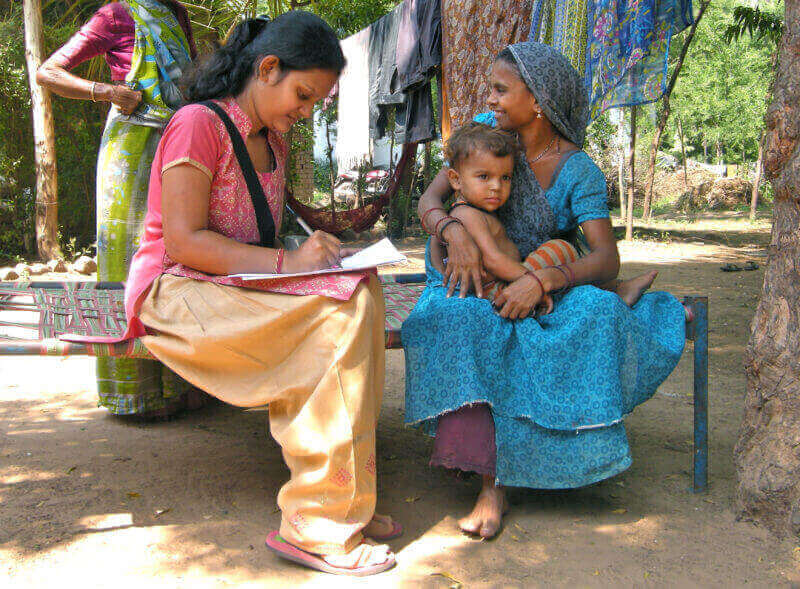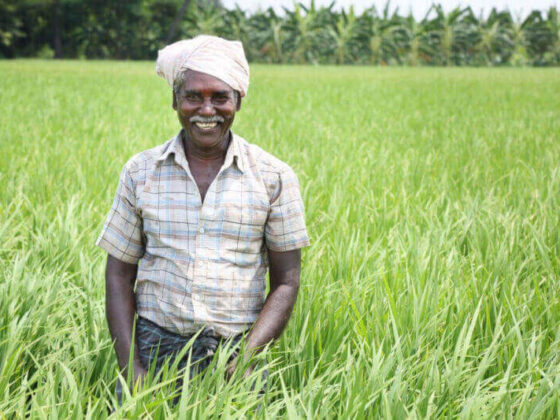In a small hamlet of four hundred and fifty families, neatly tucked away in the rural hinterlands of Tamil Nadu, despite a significant population involved in agriculture, the uptake of government schemes on organic farming was extremely low. A five-year social intervention tried to correct this by training male and female farmers – including Dalit farmers groups and sex workers on organic farming and gender and sexuality rights. A rapid Participatory Monitoring appraisal exercise of the program revealed that though the primary program objective – i.e. to increase the participation rates in government level program schemes for organic agriculture had increased, the program could not reflect wider societal changes.
This case study examines why these changes remain un-reflected at the larger societal level, the role of participatory research in uncovering these findings, and what question this begs from the evaluation community at large.
True to a participatory monitoring exercise, three sets of reflections were asked to a variety of stakeholders. The program team, volunteers and beneficiaries were asked: what changes does the program bring to the beneficiaries? The larger community was asked to reflect – whether the changes among the beneficiaries bought any larger changes in the societal architecture at large? Third, the program team and volunteers further inferred from these: where does the program need to focus? Who owns the program?
Reflection I: Did the program succeed in bringing about changes to the intended beneficiaries?

A card sorting exercise was initially used to map the beneficiaries, measuring variables like: the number of groups, members, leaders, farmer’s into organic cultivation, women’s participation and dalit participation. The initial set of reflections from the card sorting exercise yielded that community mobilization, farmers into organic cultivation, women’s participation and Dalit participation were all strong. However, it revealed that amongst women, the support to sex workers was only average. Similarly, though improvements were strongly seen in mobilizing government support, and savings, improvements in knowledge on gender and sexuality, rights and entitlements remained only average.
The Program Responsiveness was measured through a ‘River of Life’ exercise mapping the inclusiveness and evolution of the program. Yielding similar results, the program was found to be dynamic, and incrementally inclusive. For instance, while the program saw an uptake primarily by male farmers and dominant castes; in Year III, women’s farmers groups were formed and saw subsequent formation of Dalit farmer’s groups alongside providing gender training.
Reflection II: Did changes to program beneficiaries result in larger level societal changes?

As part of the second reflection exercise, the monitoring appraisal reflected on whether the changes among the beneficiaries at the level of agriculture, gender and caste had any cascading effects on the societal architecture. Although program objectives were able to positively benefit beneficiaries; however, the circumference of change remained close to negligible in the larger community, closing the possibility of sustained societal change through changes at a policy level.
For instance, while the challenges in leveraging government schemes for farmers had decreased; the controlling of farm inputs and markets by large farmers and industry, landlessness amongst Dalits and shifting of agricultural land by larger industries continued to remain problems.
Similarly, despite offering trainings in gender and sexuality issues, early marriage was in-fact on the rise, and wage disparity, dowry and ritual inferiority among women remain unaddressed. Landlessness amongst Dalit groups had increased, and so were restrictions on using common funeral grounds. Neither were there any changes in narratives about non-Dalits participating in Dalit weddings or entry into Dalit colonies.
As mentioned, while the program was able to achieve its immediate objectives; however, the program on agriculture did not include Women and Dalits initially, despite playing a critical role in sustaining agriculture as a community livelihood practice. And when women were included – those on the margins, namely sex workers and Dalit women were excluded from the program. Why?
Reflection III: Who owns the program? Where does the program need to focus?

The issues that were highlighted, largely stemmed from the stakeholders who took ownership of the program. When seen from the perspective of the implementing agency – the NGO – it is the existential issues which were prioritized. When beneficiaries took ownership of the program, it was the dominant castes and their issues that were highlighted.
As a result, it was ironically the marginalized voices which got left out from the benefits of the program.
To further elucidate, three questions come to light, which can be used to challenge the key decisions taken by the implementing agency: namely: why did the program decide to have separate gender and caste-based groups? Why were sex workers and women not encouraged to form a common group? And why did the dominant castes and Dalits not form a common group?
There are largely four sets of opinions that arose, which can be classified as a conservative, rational, moderate and liberal. The more conservative sections within the village believed that the program should operate within the local system. On the other hand, a rational stand would say that it is of primal importance for the program objective to be achieved. An alternative approach taken by more moderate groups would be that the program should go slow with a homogenous group. On the other hand, a liberal stand would say that the program benefits should permeate to all sections, ensuring no one is left behind.
Reflections for the Evaluation Community

While these four sets of opinions were rational in their own respective right, the larger challenge was that none of these groups essentially challenged the caste system or patriarchy responsible for maintaining the problem. If the community does not challenge these oppressive systems, then does participation in such interventions perpetuate and reinforce the same divides?
Community Participation cannot be defined comprehensively without identifying ‘marginalization’. As evaluators, the critical questions we need to ask ourselves are: who does the program practically belong to? And as evaluators, are we setting the same narratives in stone through our absence of critical reflexivity?
For in-depth insights, check out this video:
Based on a presentation given by Pradeep Narayanan – PRAXIS



